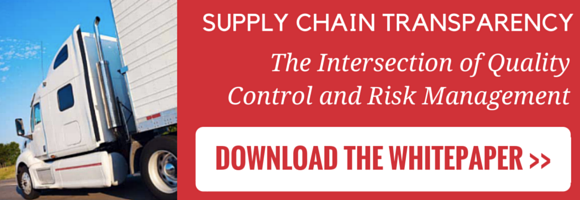
More than nearby suppliers, more than case pack options and even more than warehouse setup, time is the most precious commodity in the food supply chain. Therefore, using research and data-mining techniques to maximize efficiency in the least amount of time is a smart approach to improving fulfillment across the chain. With the right tools, data becomes just as valuable a commodity as a pound of meat or a crate of peppers — especially at the retailer level.
Reactions Take Time
Traditionally, procurement at the sales level has relied on comparatively simplistic, reactive approaches — going out of stock, for example, would trigger a reorder. At best, predictive modeling would be based on common-sense forecasts, like ordering more of popular side dish ingredients to stay well-stocked around Thanksgiving. When software is incorporated into the planning stage of procurement, however, less obvious — but still predicatively repetitive — trends emerge, allowing retailers to capitalize on them. Not only does this ensure that stock won't run low during a crucial demand period, examining trends with software keeps overstocks from letting perishables lose value or require heavy discounting to move. For the best results when shifting from reactive to predictive ordering, procurement professionals should make an effort to partner with tech-savvy, transparent supply partners in supply chain managemenData Drives Packaging Innovations
As manufacturing flexibility and variety has increased the number of product solutions available, retailers sometimes use packaging or case options that don't truly fit their needs. Examining store traffic through a given merchandising area will indicate if temperature controls are adequate against customer product handling or if a retailer might need to scale up or down in packaging alternatives. When in-store loyalty-style smartphone apps are offered and used, clever coding can even point to how long a product remains in a customer's cart, on average. Beyond procurement behind-the-scenes, these data points are important for implementation throughout a store, pointing to smarter merchandise traffic layouts or the need for cold storage solutions in carts. Active packaging, such as food package labeling with embedded QR codes, can be used to gather even more useful data from customers for these purposes.
Finding the "Sweet Spot" of Pricing
At the end of the food supply chain, determining the right balance between profitability and customer interest can be very difficult. In a business often defined by much smaller margins than retail peers, grocery stores and food retailers absolutely must hit this target squarely. Gathering data from not only one's own store, but as much of the industry as possible, is the best way to determine if pricing is competitive, alluring or a pain point to the end customer.
Ingredient and edible product volatility is a critical market research point; retailers that fail to study sequential ups and down, or potential impact events further up on the supply chain, risk getting the rug pulled out from under their feet. Consider the numerous "sorry, we're out" style signs that crop up at fast food establishments or grocery stores when weather or disease ruins a produce crop. A "heads up" through predictive market study might have allowed these businesses to procure the same product elsewhere, ahead of time.
Preventing PR Problems
Even a single illness can be a bitter pill to swallow for a successful food-based business. Bad employees can be fired, stores can be renovated and pricing can be adjusted, but fear over food is a ghost that seems to linger far longer in the mind of the consumer. Investing in the IoT with smart devices and tracking helps keep your in-store stock beyond reproach, and consciously partnering with 3rd party logistics companies that emphasize transparency and accountability will strengthen that ideal. Aspects of moving to this transparent, interlinked approach to fulfillment benefit the company far beyond the integration and efficiency goals themselves. Requiring, for example, that no handwritten data, report or invoice be brought into the system keeps everything searchable and storable, giving management unfettered oversight and research access.
If your supply chain strategy needs more depth and perspective — and most do — consider looking to your data as a potential solution. The difference a few numbers, properly studied in the right context, can do for a food supply chain is nothing short of revolutionary.






